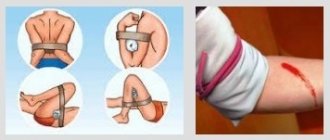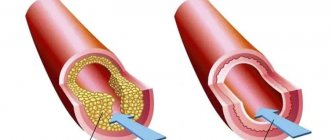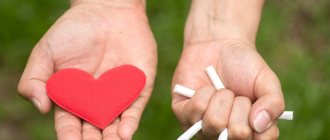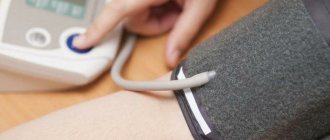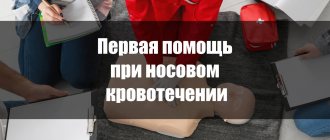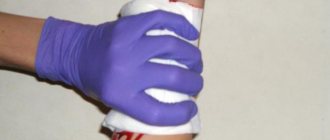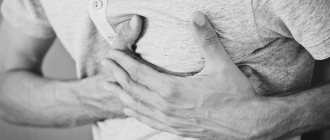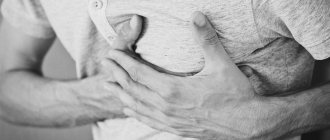The method of first aid for capillary bleeding depends entirely on the scale and depth of the damage, the general condition of the victim and some other factors. It is advisable to try to stop the bleeding, maintaining normal hemodynamics and ensuring normal functioning of the internal organs. The main actions are as follows:
- For a minor abrasion or scratch, treating with an antiseptic and applying a bactericidal patch is sufficient.
- If the damage to the limb is extensive, the arm or leg is raised up, reducing the pressure, and then treated with an antiseptic solution. It is recommended to apply a hemostatic sponge to the wound. It will stop the bleeding and eliminate bacteria. If such a sponge is not available, you will need a pressure bandage and a cooling compress on top of it.
- If nosebleeds begin, the victim is slightly tilted forward, the wings of the nose are pinched, and the bridge of the nose is cooled with a compress. For severe bleeding, cotton or gauze swabs soaked in hydrogen peroxide are inserted into the nostrils.
- If there is a suspicion of internal bleeding, it is necessary to call a team of doctors.
What is the main danger of capillary bleeding?
First aid for capillary bleeding should not be called an unnecessary procedure. Compared to arterial and venous bleeding, capillary bleeding is not so dangerous, and in most cases the body copes with it on its own. But there are situations that are life-threatening:
- the skin is extensively damaged;
- the ambient temperature is increased;
- blood clotting is impaired;
- There is blood poisoning, oncology, hepatitis, arterial hypertension and other severe pathologies.
The most dangerous is bleeding as a result of damage to the blood vessels of internal organs. Prolonged bleeding provokes a decrease in blood pressure, oxygen starvation, and disruption of the cardiovascular system. If the blood loss is severe, the person dies without treatment. Hemorrhage in the brain affects important centers and also leads to a fatal outcome. Pleural bleeding disrupts breathing and puts pressure on the lung. In most cases, it is important to react in time to manifestations of capillary bleeding and provide first aid in a timely manner.
STRETCH
Sprain is damage to soft tissues (ligaments, muscles, tendons, nerves) under the influence of a force that does not violate their integrity. Most often, sprains of the ligamentous apparatus of the joints occur during incorrect, sudden and sharp movements that go beyond the normal range of motion of a given joint (when turning the foot, lateral turns of the leg with a fixed foot, etc.). In more severe cases, a tear or complete rupture of the ligaments and joint capsule may occur.
SIGNS: the appearance of sudden severe pain, swelling, impaired movement in the joints, hemorrhage into the soft tissues. When you feel the stretched area, pain appears.
FIRST AID involves providing rest to the victim, tightly bandaging the damaged joint, ensuring its mobility and reducing hemorrhage. Then you need to consult a traumatologist.
How to quickly stop bleeding?
Small injuries can be easily localized by applying pressure to the wound for 5 minutes with a hand or cloth to form a blood clot. For cut wounds, the edges will stick together after some time. The skin around the wound is carefully wiped with the available antiseptic, then a bactericidal patch or sterile bandage is applied.
If a deep venous injury with drip bleeding is detected, it is necessary to sit or lay the victim down in order to elevate the damaged area above the heart. A hemostatic sponge is applied to painful large wounds, securing it with a bandage. The sponge gradually dissolves on its own; there is no need to remove it. In the absence of a sponge, apply a pressure bandage to the wound. Gauze folded in 2-3 layers and a bandage for fixation are suitable. If blood has leaked through the bandage, apply a piece of cotton wool and bandage again over the first bandage.
With internal bleeding, the victim feels drowsiness, weakness, and wants to drink. The pulse quickens, the pressure drops, the head is dizzy. Damage to the stomach is indicated by vomiting blood, intestines - tar-like stool, rectum - scarlet blood in the stool, ureters - red urine. If internal capillary bleeding is suspected, first aid will be to lie the victim down and apply cold to the damaged area. Then the doctors who arrived to the call act.
HEART MASSAGE
HEART MASSAGE is a mechanical effect on the heart after it has stopped in order to restore activity and maintain continuous blood flow until the heart resumes functioning.
SIGNS OF SUDDEN HEART STOP - loss of consciousness, severe pallor, disappearance of pulse, cessation of breathing or the appearance of rare convulsive breaths, dilated pupils.
THE MECHANISM OF EXTERNAL HEART MASSAGE is as follows: with a sharp push-like pressure on the chest, it is displaced by 3 - 5 cm, this is facilitated by relaxation of the muscles of the victim who is in a state of agony. This movement leads to compression of the heart and it can begin to perform its pumping function - it pushes blood into the aorta and pulmonary artery when compressed, and when expanded, it sucks in venous blood. When performing an external cardiac massage, the victim is placed on his back, on a flat and hard surface (floor, table, ground, etc.), and the belt and collar of his clothes are unfastened.
The person providing assistance, standing on the left side, places the palm of the hand on the lower third of the sternum, places the second palm crosswise on top and applies strong measured pressure towards the spine. Pressures are applied in the form of pushes, at least 60 per minute. When performing a massage on an adult, significant effort is required not only from the hands, but also from the entire body. In children, massage is performed with one hand, and in infants and newborns - with the tips of the index and middle fingers, with a frequency of 100-110 shocks per minute. The displacement of the sternum in children should be within 1.5-2 cm.
The effectiveness of indirect cardiac massage is ensured only in combination with artificial respiration. It is more convenient for two people to carry them out. In this case, the first one makes one blow of air into the lungs, then the second one makes five pressures on the chest. If the victim’s cardiac activity has recovered, the pulse is determined, the face has turned pink, then the cardiac massage is stopped, and artificial respiration is continued in the same rhythm until spontaneous breathing is restored. The issue of stopping measures to provide assistance to the victim is decided by a doctor called to the scene of the incident.
POISONING BY ACCIDENTAL CHEMICAL HAZARDOUS SUBSTANCES
POISONING OF PEOPLE BY ACCIDENTAL CHEMICALLY HAZARDOUS SUBSTANCES (HAS) during accidents and disasters occurs when hazardous substances enter the body through the respiratory and digestive organs, skin and mucous membranes. The nature and severity of the lesions are determined by the following main factors: the type and nature of the toxic effect, the degree of toxicity, the concentration of chemicals in the affected object (territory) and the timing of human exposure.
SIGNS.
The above factors will also determine the clinical manifestations of the lesions, which in the initial period may be:
- irritation phenomena - cough, sore and sore throat, lacrimation and pain in the eyes, chest pain, headache;
- increase and development of phenomena from the central nervous system (CNS) - headache, dizziness, feelings of intoxication and fear, nausea, vomiting, euphoria, impaired coordination of movements, drowsiness, general lethargy, apathy, etc.
FIRST AID should be provided as soon as possible and consist of:
- putting a gas mask on the victim, carrying out partial sanitary treatment of open areas of the body and clothing adjacent to open areas of the body;
- using for respiratory protection, in the absence of a gas mask, improvised means (a piece of cloth, towel and other materials) moistened with a solution of baking soda;
- introduction of an antipode (antidote);
— removal (removal) of the victim from the infection zone;
— carrying out, if necessary, artificial respiration and chest compressions in uncontaminated areas;
— providing first aid in the presence of a chemical outbreak (see section “Chemical burn”);
— delivery of the victim to the nearest medical facility.
How to competently provide first aid for severe capillary bleeding?
First aid for capillary bleeding involves applying a tourniquet. The indication is extensive damage, impaired coagulation. Rules for applying a tourniquet:
- Wrap the tourniquet 2 times around the injured limb above the wound. Correct actions lead to the fact that the pulse under the wound will not be palpable.
- Place a piece of fabric under the tourniquet to avoid trophic changes.
- Be sure to record the exact time of application of the tourniquet. The skin condition is monitored.
- In the warm season, you can leave the tourniquet on the body for up to 2 hours, in winter - no more than 1 hour. Every 30 minutes you need to relax the rubber band for 30 seconds to avoid tissue death. If everything is done correctly, the limb does not turn blue or swell. And vice versa.
After applying a rubber tourniquet, the victim is quickly sent to the hospital for diagnosis and treatment. If you don’t have a rubber band at hand, use a belt, scarf, or tie.
ARTIFICIAL RESPIRATION
ARTIFICIAL RESPIRATION is an emergency first aid measure for drowning, suffocation, electric shock, heat and sunstroke. This is carried out until the victim’s breathing is restored.
THE MECHANISM OF ARTIFICIAL RESPIRATION is as follows:
- place the victim on a horizontal surface;
- clear the victim’s mouth and throat of saliva, mucus, soil and other foreign objects; if the jaws are tightly clenched, move them apart;
- tilt the victim’s head back, placing one hand on the forehead and the other on the back of the head;
- take a deep breath, bend over to the victim, seal the area of his mouth with your lips and exhale. The exhalation should last about 1 second and help lift the victim’s chest. In this case, the victim’s nostrils should be closed and his mouth covered with gauze or a handkerchief for reasons of hygiene;
— frequency of artificial respiration – 16-18 times per minute;
- periodically empty the victim’s stomach of air by pressing on the epigastric region.
Main causes and symptoms
Capillaries are the smallest vessels, and in normal cases, their superficial damage to the skin does not pose any danger. Stopping the bleeding occurs on its own and does not require special action. The main sign of damaged capillaries is bright red blood. It flows slowly, there is no pulsation. The blood clotting system will work quickly. The vessel contracts, the blood flow slows down and stops due to the formation of a blood clot from platelets and fibrin fibers. Typically the process lasts up to 5 minutes.
Causes of capillary bleeding:
- abrasions, scratches and cuts;
- burns;
- low platelet concentration (thrombocytopenic purpura);
- decreased coagulability (hemophilia);
- pseudohemophilia - increased vascular permeability, causing spontaneous bleeding;
- oncology;
- purulent inflammation of the skin affecting the capillaries;
- atherosclerosis;
- hormonal imbalance, etc.
External bleeding is noticeable immediately, but internal bleeding (from the vessels of the stomach, uterus, intestines) is determined by the person’s condition. The main signs are weakness and drowsiness for no particular reason, pale skin, severe thirst, rapid pulse, decreased blood pressure. Sometimes the listed symptoms are accompanied by severe shortness of breath, nausea, fainting and dizziness. If first aid is not provided in time, internal capillary bleeding can be fatal.
DISLOCATION
Dislocation is a displacement of the articular ends of bones, partially or completely disrupting their mutual contact.
SIGNS:
the appearance of intense pain in the affected joint;
dysfunction of the limb, manifested in the inability to perform active movements;
forced position of the limb and deformation of the joint shape;
displacement of the articular head with desolation of the articular capsule and springy fixation of the limb in its abnormal position.
Traumatic joint dislocations require immediate first aid. Timely reduction of a dislocation, with proper subsequent treatment, will lead to complete restoration of the impaired limb function.
FIRST AID should consist, as a rule, of fixing the injured limb, administering an anesthetic and sending the victim to a medical facility. Fixation of the limb is carried out with a bandage or hanging it on a scarf. In case of dislocation of the joints of the lower limb, the victim should be taken to a medical facility in a supine position (on a stretcher), with pillows placed under the limb, its fixation, and the victim given an anesthetic. When providing first aid in unclear cases, when it is not possible to distinguish a dislocation from a fracture, the victim should be treated as if he had an obvious bone fracture
THERMAL BURN
THERMAL BURN is a type of injury that occurs when body tissue is exposed to high temperature. Depending on the nature of the agent that caused the burn, the latter can be obtained from exposure to light radiation, flame, boiling water, steam, hot air, or electric current.
Burns can be of a wide variety of locations (face, hands, torso, limbs) and occupy different areas. According to the depth of damage, burns are divided into 4 degrees: I degree is characterized by hyperemia and swelling of the skin, accompanied by burning pain; Stage II – formation of blisters filled with a clear yellowish liquid; IIIa degree – spread of necrosis to the epidermis; IIIb – necrosis of all layers of skin; IV degree – necrosis of not only the skin, but also the underlying tissues.
FIRST AID is:
- cessation of the action of the traumatic agent. To do this, you need to throw off the burning clothes, knock down the person running in burning clothes, pour water on him, cover him with snow, cover the burning area of clothing with an overcoat, coat, blanket, tarpaulin, etc.;
— extinguishing burning clothing or incendiary mixture. When extinguishing napalm, damp earth, clay, and sand are used; Napalm can only be extinguished with water by immersing the victim in water;
- prevention of shock: administration (giving) of painkillers;
- removing (cutting off) the affected clothing from the affected areas of the body;
— applying an aseptic dressing to the burned surfaces (using a bandage, an individual dressing bag, a clean towel, a sheet, a handkerchief, etc.);
- immediate referral to a medical facility.
The effectiveness of self- and mutual aid depends on how quickly the victim or the people around him can navigate the situation and use first aid skills and means.
RESUSCITATIVE MANAGEMENT in the affected area is reduced to closed heart massage, ensuring airway patency, artificial respiration from mouth to mouth or mouth to nose. If resuscitation by these methods is ineffective, it is stopped.
CHEMICAL BURN
CHEMICAL BURNS are the result of exposure of tissues (skin, mucous membranes) to substances that have a pronounced cauterizing property (strong acids, alkalis, salts of heavy metals, phosphorus). Most chemical burns of the skin are industrial, and chemical burns of the mucous membrane of the oral cavity, esophagus, and stomach are more often domestic.
The effect of strong acids and salts of heavy metals on tissues leads to coagulation, coagulation of proteins and their dehydration, therefore, coagulative necrosis of tissues occurs with the formation of a dense gray crust of dead tissue, which prevents the action of acids on deeper tissues. Alkalis do not bind proteins, but dissolve them, saponify fats and cause deeper tissue necrosis, which takes on the appearance of a white soft scab.
It should be noted that determining the degree of a chemical burn in the first days is difficult due to insufficient clinical manifestations.
FIRST AID is:
- immediately washing the affected surface with a stream of water, which ensures complete removal of the acid or alkali and stops their damaging effect;
— neutralization of acid residues with a 2% solution of sodium bicarbonate (baking soda);
— neutralization of alkali residues with a 2% solution of acetic or citric acid;
— applying an aseptic dressing to the affected surface;
— giving the victim painkillers if necessary.
PHOSPHORUS BURNS are usually deep because phosphorus continues to burn when it comes into contact with the skin.
FIRST AID for phosphorus burns is:
- immediate immersion of the burned surface in water or abundant irrigation with water;
- cleaning the surface of the burn from pieces of phosphorus using tweezers;
- applying a lotion with a 5% solution of copper sulfate to the burn surface;
— applying an aseptic dressing;
- giving the victim painkillers.
Avoid applying ointment dressings, which can enhance the fixation and absorption of phosphorus.
